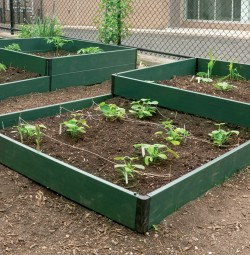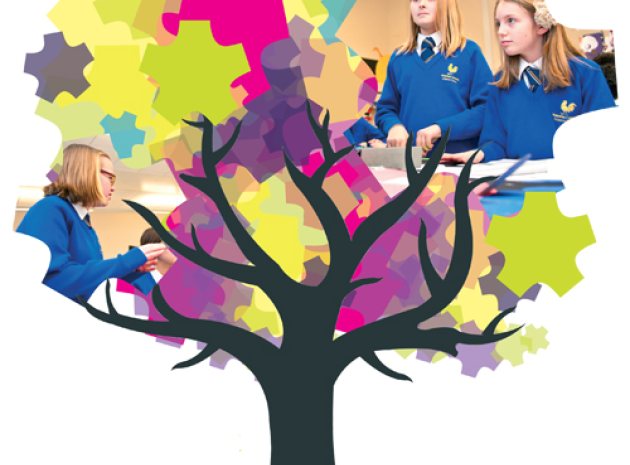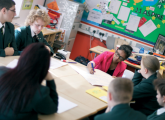When we talk about ‘sustainable infrastructure’ in schools we often focus solely on the physical aspects; how water, energy and materials are used in a building. If we only think in these terms, however, we risk missing the key element – the adaptable, changeable, growing and integral part of any system; in other words, the people. In a school environment, this will include the students, teachers and support staff, as well as the wider community interacting with them.
Human beings are as much a part of an infrastructure as any other piece of a locale. Buildings are, after all, built for and used by people and it is the power of human actions that has the greatest potential to create a sustainable infrastructure at any stage of a building’s life.
The positive effect that people can have is, however, limited by one factor: knowledge. If we have no awareness of sustainability and of the impact that our actions have on the world around us, how can we help create a sustainable future for that world and ourselves? Education has a major part to play in the future of our society and our planet. It’s education that spreads knowledge and empowers people to make decisions about changes they may want to bring about in their daily lives. And so it makes sense that a truly ‘sustainable school’ in terms of buildings and grounds must be developed alongside a growing awareness of environmental issues amongst staff and students alike.

Flag it up
The best way to become sustainable is to live within ‘nature’s budget’. At present this means we all need to radically change the ways we think about and use resources, and the first step on this journey is easier than you might think, especially when you get everyone involved in the decision making process. The Eco-Schools Green Flag is an international award that recognises the progress schools can make on their eco-friendly journey. The awarding process starts with participants adopting a student-led approach and taking a good look at what the community already has and what it could improve. This enables the school to do two things: to empower, enthuse and educate students (and through them their families and the wider community); and to identify the areas that can be worked on in the short, medium and long term.
Some groups can afford to implement large-scale changes to tackle energy consumption straight away, such as installing solar panels and wind turbines. However, while looking to ‘green’ sources of energy to meet our energy needs is certainly the direction in which we should be heading, in the short term it is often worth investigating simpler solutions. Insulating the school’s building and ensuring good energy practice is carried out by all are relatively easy to implement, for example, and can make significant energy savings. The benefits of implementing these smaller changes are that they pay for themselves relatively quickly and have a shorter recovery period. This means, of course, that the savings from bills can be used to fund larger projects in time; a great way to make being environmentally friendly pay for itself, economically speaking.
In short, we need to stop looking at elements of any infrastructure – physical or social – as separate, and consider all aspects as interconnected; part of the whole. Then we should ask ourselves if there are ways we could kill two birds with one stone. For example, water saving bags in toilets is a great idea – but might it be taken further? Why not use an empty drinking bottle filled with water instead, resulting in a saving on the fuel needed to create and transport the bag?
While we are thinking holistically, we should also consider embodied energy. This is the energy used and expended in the creation of all things made, transported and constructed. Natural products such as wood have a much lower embodied energy than, say brick or steel. As a plus, wood also locks up the carbon within it until it rots away. So, when considering how to make a school work in as sustainable a manner as possible, it’s important to focus first on how to make the most of what you already have, and ensure that planned improvements have the lowest impact possible in terms of embodied energy.
Communities are one of the biggest variables in any infrastructure and always need to be taken into account; ideals need to work well with the communities they are meant to serve. Education is, as with many things, the key to making an infrastructure truly sustainable – and schools, happily, are a great place to sow the seeds of environmental thought.
Try these…
Lessons that get students investigating eco-topics in the context of their immediate surroundings are a great way to get them thinking about the practical implications of moving towards a more sustainable infrastructure. We can then move to educating about different environmental links, what works well and why, and what changes are reasonable to consider for our own schools.
1. An excellent activity is to assess the level of ‘energy costs’ or resource costs a given material or item might have. For example, a pair of jeans made from cotton has manual and mechanical labour in the sowing, growing and harvesting; transportation and production of fertiliser to the fields; harvesting labour then cleansing chemicals (again produced and transported); weaving and cloth-making labour/energy/transport; then all the resource costs associated with actually making the jeans; all those involved transporting and then marketing them; energy costs from the shop etc. Can students think of ways to reduce these costs? How could consumer awareness be raised regarding this issue?
2. This works both as a hypothetical and a practical challenge. Take an area of the school grounds and plan a garden with a greenhouse / cold frame on it. Rather than use specific plant species, work with some generic types (e.g. ‘Plant 1 – grows tall and needs a lot of light, casts 70 % shade; Plant 2 short and needs a lot of light, doesn’t cast shade’). It is also worth building walls etc. into the plan and thinking about plant diseases, heating requirements and reflective/insulating materials. It can be good fun watching students try to work out the best mix of these materials to get a working garden. It can also be worth throwing in some duplicates – different names but similar properties – and seeing what is left over. Can anything be used to do two jobs? Is anything left over?
Info bar
Find out more about the eco-schools green flag award scheme, read case studies and snap up free resources at eco-schools.org.uk
About the author
Mark Buxton is a project manager with Keep Britain Tidy, the organisation that delivers the ecoschools programme in England; he comes from a horticultural background and has a passionate interest in all things environmental, including veganism and permaculture.










